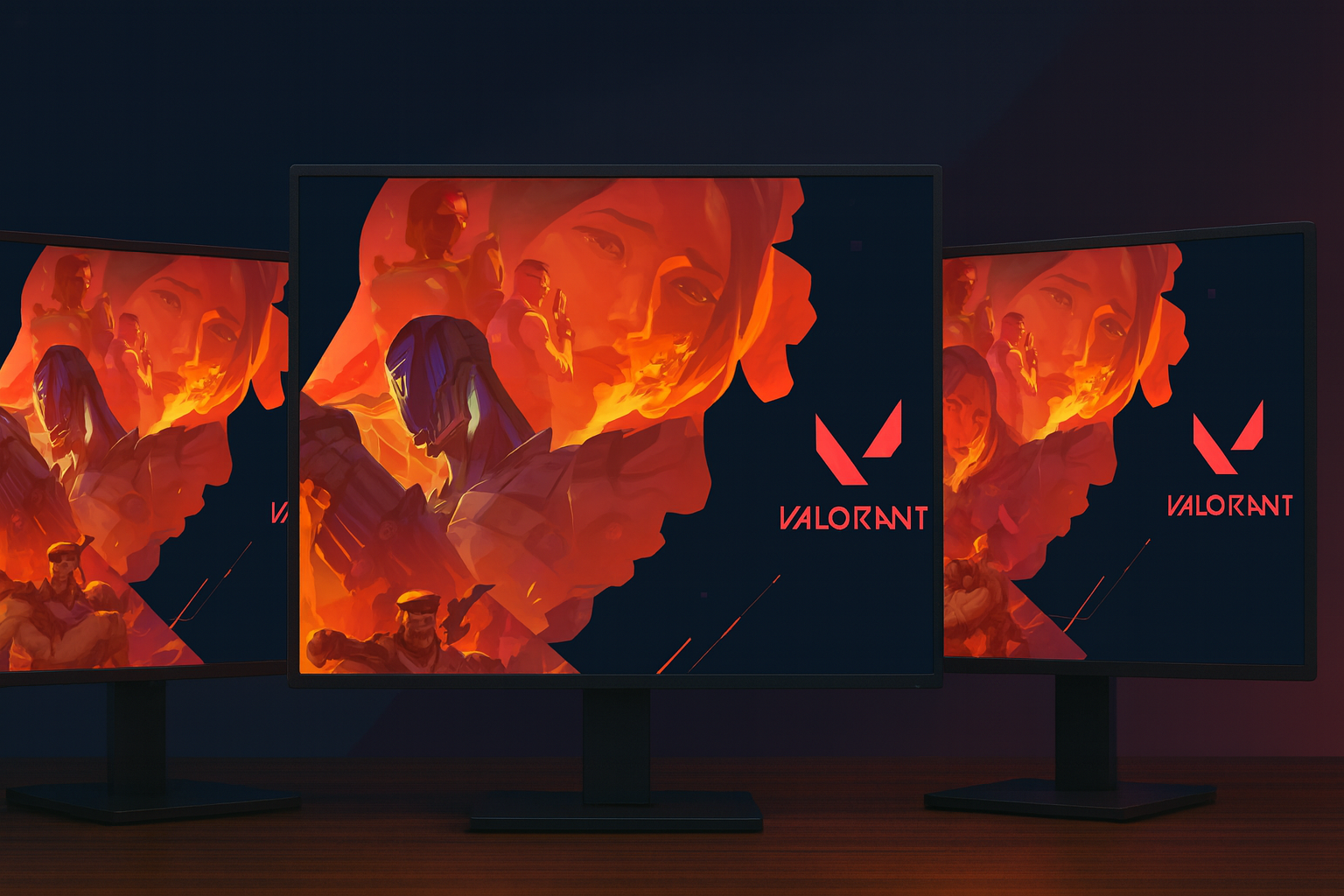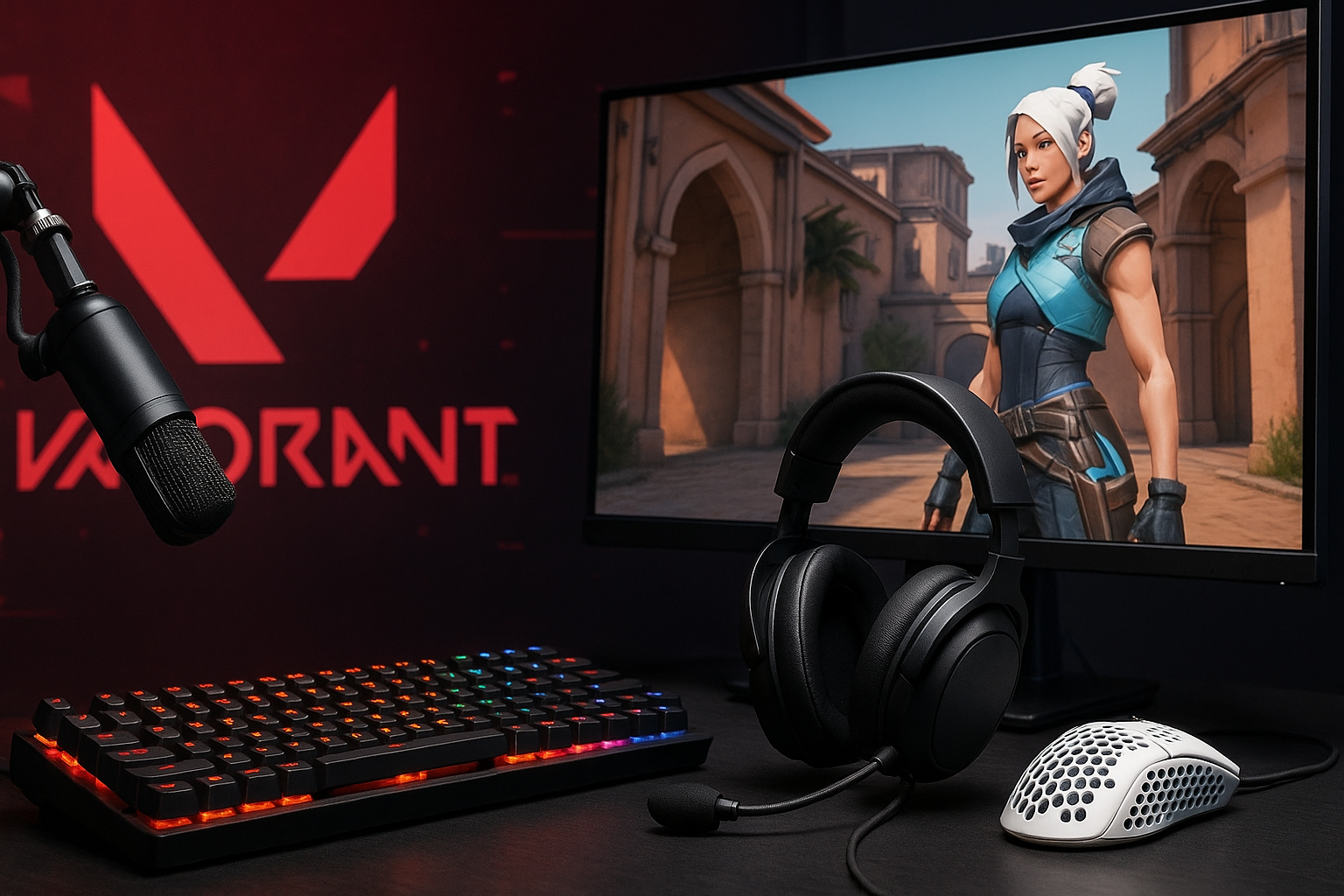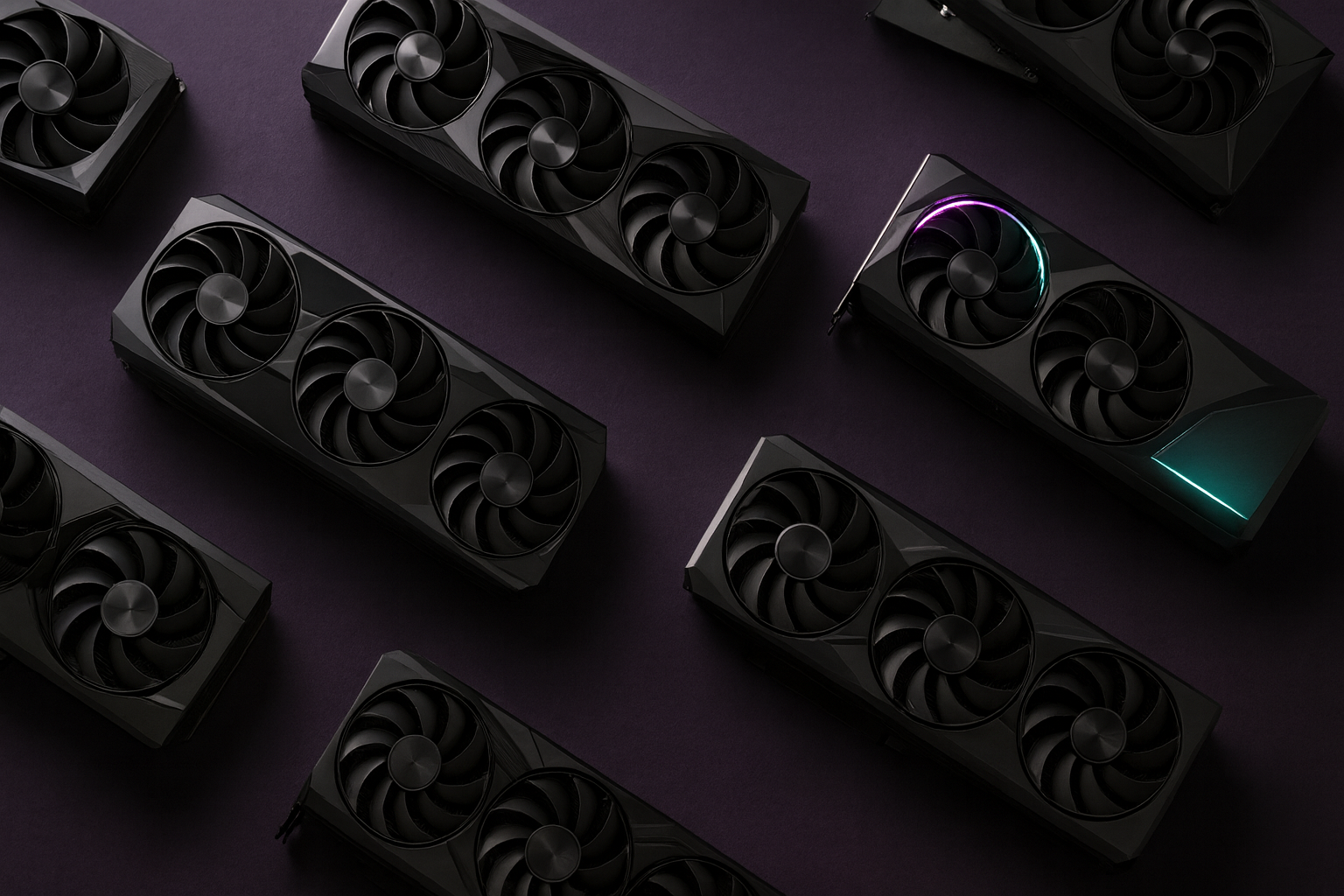
Best Monitors for Valorant 2025 – 240 Hz & 360 Hz Pro Picks + Tournament Setups
By: pcbuildhelper Editorial Team | Updated: 9/19/2025
If you’re asking “What’s the best gaming monitor for Valorant in 2025?” the answer depends on refresh rate, responsiveness, and pro-level reliability. Valorant is a precision shooter where milliseconds decide rounds. The game itself isn’t graphically demanding, but competitive players gain a clear advantage with high-refresh-rate monitors that reduce input lag and deliver ultra-smooth visuals.
In 2025, 240 Hz and 360 Hz monitors dominate the esports scene. A 240 Hz panel is already more than enough for most competitive players, while 360 Hz options are favored by Valorant pros who want the fastest response times possible. These monitors make the difference when hitting flick shots, controlling recoil, and reacting instantly in clutch moments.
This guide breaks down the best Valorant monitors in 2025, including:
- Flagship 360 Hz esports displays trusted by professionals.
- Versatile 240 Hz monitors that balance performance and price.
- Budget-friendly high-refresh panels for aspiring players.
We’ll also explain adaptive sync (G-Sync vs FreeSync), why it matters for Valorant, and highlight which models are currently used by streamers and esports athletes.
TL;DR – Best Monitors at a Glance
- Best 360 Hz Esports: BenQ ZOWIE XL2566K – The tournament standard for Valorant pros.
- Best 360 Hz OLED: Alienware AW2725DF – Combines OLED clarity with esports refresh.
- Best 240 Hz Premium: MSI MPG 321URX QD‑OLED – Gorgeous visuals with competitive performance.
- Best Budget 240 Hz: KOORUI GN02 / AOC 24G2 – Affordable and responsive for aspiring pros.
Valorant Pros’ Monitors & Tournament Standards (360 Hz)
- High refresh rates (240 Hz+): Lower input latency and smoother motion, essential for rapid aiming and flicks.
- Response time: TN and OLED panels minimize ghosting and blur, which can affect crosshair placement.
- Adaptive sync (G‑Sync/FreeSync): Helps smooth gameplay and prevent screen tearing during FPS fluctuations.
- 1080p dominance: Almost all professional players use 1080p 24‑25″ monitors to maximize frame rate and reduce visual scanning distance.
360 Hz Monitors: 1080p vs 1440p - Which Should You Choose?
BenQ ZOWIE XL2566K – 24.5″, 1080p, 360 Hz, TN
- Overview:
The XL2566K is the official esports monitor for many Valorant tournaments. Its 360 Hz refresh rate, paired with BenQ’s DyAc⁺ motion blur reduction, delivers exceptionally sharp moving images—critical for tracking opponents during rapid flicks. - Why Pros Love It:
Nearly every pro player or streamer in Valorant has used this monitor because it prioritizes latency, clarity, and consistency over all else. Features like the S‑Switch, custom profiles, and side shields optimize tournament conditions. - Pros:
- True 360 Hz refresh for lowest input latency
- DyAc⁺ tech improves motion clarity during rapid movements
- Compact, adjustable stand optimized for esports
- Cons:
- TN panel with weaker color and viewing angles
- Pricey for a 1080p monitor (~$599–$699)
Alienware AW2725DF – 26.7″, 360 Hz, QD‑OLED
- Overview:
Alienware’s AW2725DF is the first 360 Hz QD‑OLED monitor, merging stunning visual quality with esports‑grade speed. Its 0.03 ms response time nearly eliminates ghosting, and OLED’s infinite contrast improves visibility in dark scenes. - Why It’s Great for Valorant:
While OLEDs were once considered “too slow” for pro FPS, this model proves otherwise. Fast response, adaptive sync, and excellent HDR make it a hybrid for competitive play and content creation/streaming. - Pros:
- 360 Hz + 0.03 ms response = near-instant visuals
- OLED color and contrast for better enemy visibility
- FreeSync Premium Pro, HDMI 2.1, and DisplayPort 1.4
- Cons:
- Not officially G‑Sync certified
- ~$900 premium price
Best 240 Hz Monitors for Valorant Ranked Play
MSI MPG 321URX QD‑OLED – 32″, 240 Hz
- Overview:
A hybrid monitor for players who want both competitive high refresh and top-tier visuals. It supports 240 Hz at native 4K and can downscale to 1080p or 1440p for higher frame rates in esports titles. - Why It’s Great for Valorant:
Ideal for players who also create content or enjoy single-player visuals but still want a responsive panel for ranked or tournament play. - Pros:
- OLED panel with excellent HDR and color
- Flexible resolution and refresh combinations
- Strong balance between gaming and visuals
- Cons:
- Larger size can reduce visual focus in competitive play
- ~$1,099 price may be overkill for 1080p esports
AOC 24G2 / KOORUI GN02 – 24″, 240 Hz, IPS/VA
- Overview:
Budget-friendly esports monitors that still provide high refresh rates and solid input response. These models are popular for new players or secondary practice setups. - Why They Work for Valorant:
While slightly slower than TN or OLED panels, they deliver smooth 144 Hz–240 Hz gameplay and can be paired with FreeSync or G‑Sync Compatible modes for stutter‑free visuals. - Pros:
- Excellent value for entry-level competitive play
- Solid color quality and good motion handling
- Widely available at ~$200–$250
- Cons:
- Minor ghosting compared to TN/OLED panels
- Input lag slightly higher than pro-tier options
Adaptive Sync: G‑Sync vs FreeSync in Valorant
- G‑Sync (NVIDIA GPUs):
- Lowest latency and most stable tear‑free performance
- Preferred by pros with RTX 40‑ or 50‑series cards
- FreeSync / Adaptive Sync (AMD GPUs):
- Budget-friendly and supported on most modern monitors
- G‑Sync Compatible mode often works on FreeSync panels
- Slightly higher latency vs native G‑Sync
Adaptive sync won’t increase FPS in Valorant but helps ensure smooth, distraction-free gameplay—crucial in sudden FPS dips or during streaming.
Budget-Friendly Competitive Options
- BenQ XL2411K (24″, 144‑240 Hz TN): Classic esports monitor, responsive and widely used in training setups.
- AOC Q27G3XMN (27″, 280 Hz IPS): Excellent compromise between refresh rate and visual quality for ~$300.
Even without OLED or 360 Hz, these options deliver low-latency gameplay and smooth high-FPS performance for aspiring competitive players.
Final Thoughts
- Best 360 Hz for Valorant Pros:
- BenQ ZOWIE XL2566K – Tournament-proven and ultra-low latency.
- Alienware AW2725DF – 360 Hz QD‑OLED for competitive + visual excellence.
- Best 240 Hz for Most Players:
- MSI MPG 321URX – High-end hybrid for competitive gaming and content.
- AOC 24G2 / KOORUI GN02 – Budget 240 Hz for smooth esports entry.
- Budget-Friendly Choices:
- BenQ XL2411K and AOC Q27G3XMN for competitive gaming under $300.
If your goal is to maximize FPS, reduce input latency, and maintain smooth visuals, a 1080p 240 Hz or 360 Hz monitor remains the gold standard for Valorant pros in 2025. OLED options are rising for those who want both responsiveness and image quality, but TN panels still dominate esports events.
FAQs
Which monitor do Valorant pros use in tournaments?
The BenQ ZOWIE XL2566K 24.5" 1080p 360 Hz is the official tournament standard.
Is a 360 Hz monitor worth it for Valorant?
Yes, 360 Hz panels like the BenQ XL2566K or Alienware AW2725DF offer the lowest input latency and clearest motion for competitive play.
Editorial Team
Every guide on pcbuildhelper is created by our editorial team of experienced PC builders, gamers, and engineers. We combine hands-on testing, community insights, and trusted industry data to make sure our recommendations are practical, accurate, and up to date. While we use AI to assist with research and formatting, all final content is reviewed and validated by our human team to ensure clarity and trustworthiness.
Related Articles

Best Valorant 2025 PC Builds – RTX 5060 / 5060 Ti FPS Benchmarks & High-Hz Setups
Build the ultimate Valorant rig for 2025: from budget to high-end. See RTX 5060 & 5060 Ti FPS benchmarks at 1080p/1440p and the best CPUs for 144 Hz–360 Hz competitive play.
9/19/2025

Best 27-Inch 1440p Gaming Monitors (2025) – High FPS & Competitive Play
Find the best 27-inch 1440p gaming monitors in 2025 for high FPS performance. Compare the top QHD displays with 240Hz refresh rates, low latency, and vibrant visuals for both competitive and casual gaming.
8/30/2025

Valorant Pro Gear & Peripherals Guide: What Top Players Use
See the exact gear Valorant pros use—mice, keyboards, monitors & headsets. Find out which pro equipment can boost your aim, speed & comfort.
9/19/2025

The Best 1440p GPUs to Buy in 2025 for Smooth, High-FPS Gaming
Explore the best GPUs for 1440p gaming in 2025, from top-tier to budget-friendly picks. Discover ideal VRAM sizes, DLSS and FSR features, and futureproof performance for smooth, high-FPS gameplay.
11/22/2025

Best GPU Deals for Black Friday 2025
Get the best Black Friday 2025 GPU deals with real pricing targets for 1080p, 1440p, and 4K gaming. Find the highest FPS-per-dollar graphics cards this season.
11/22/2025